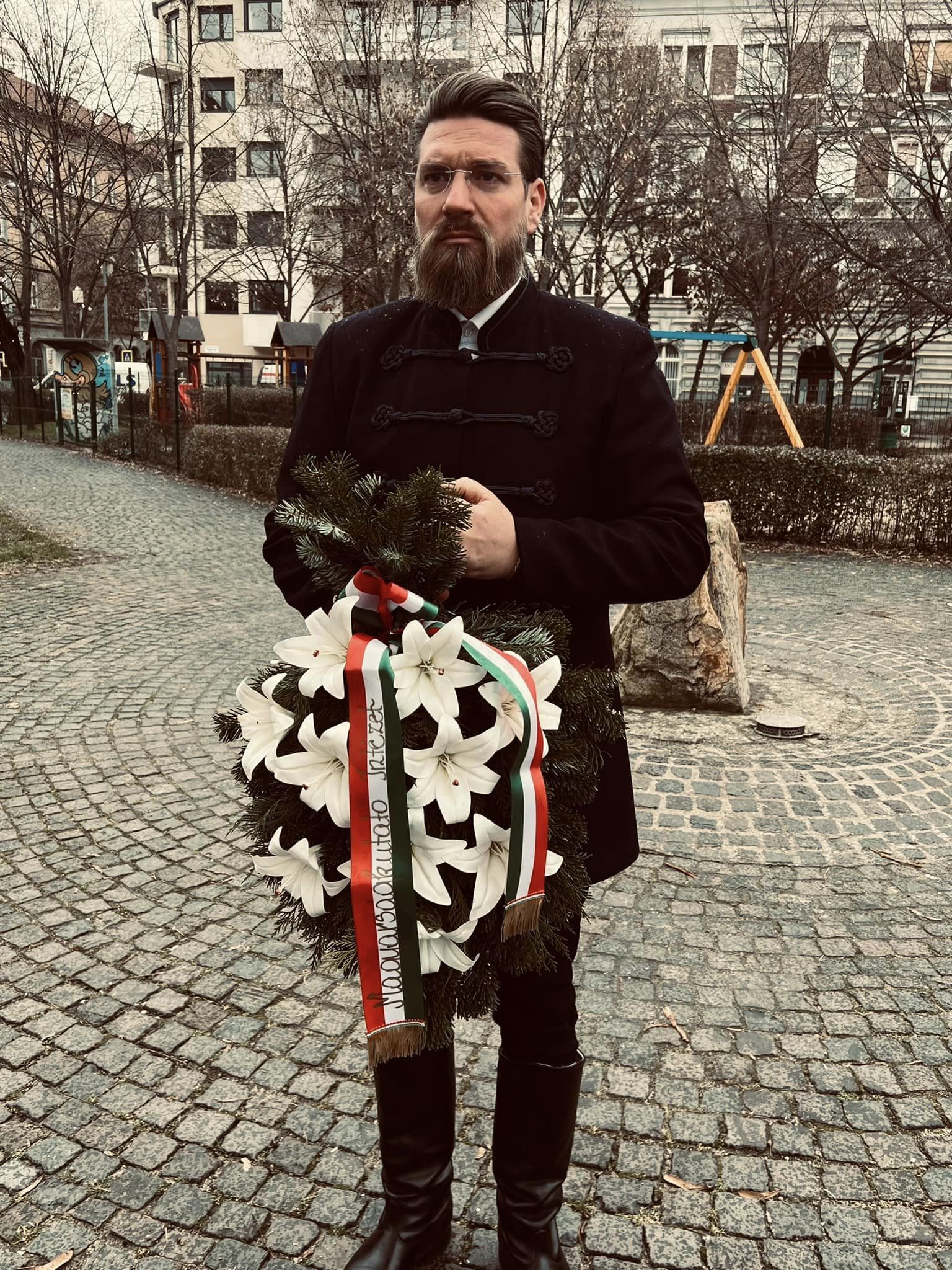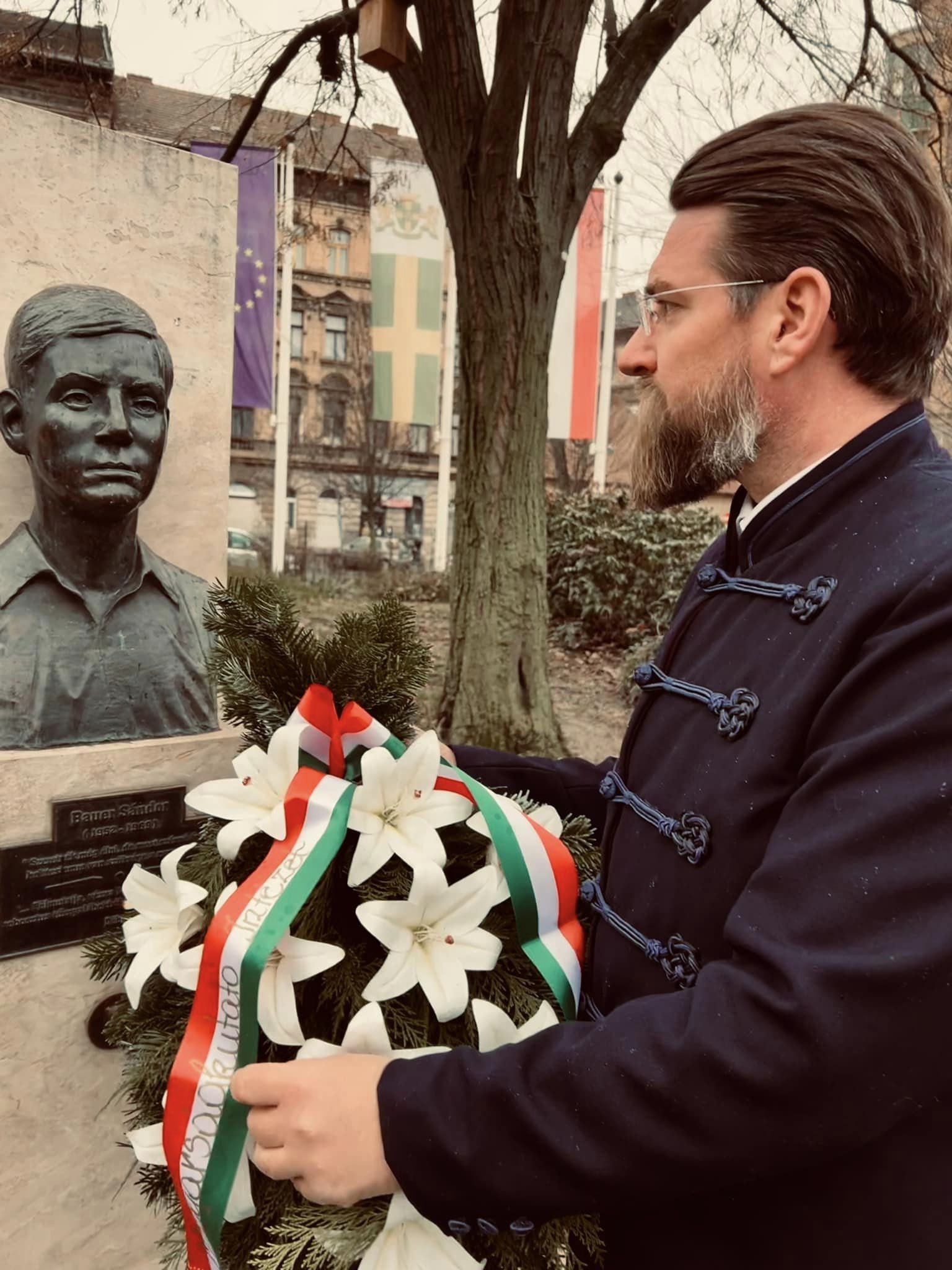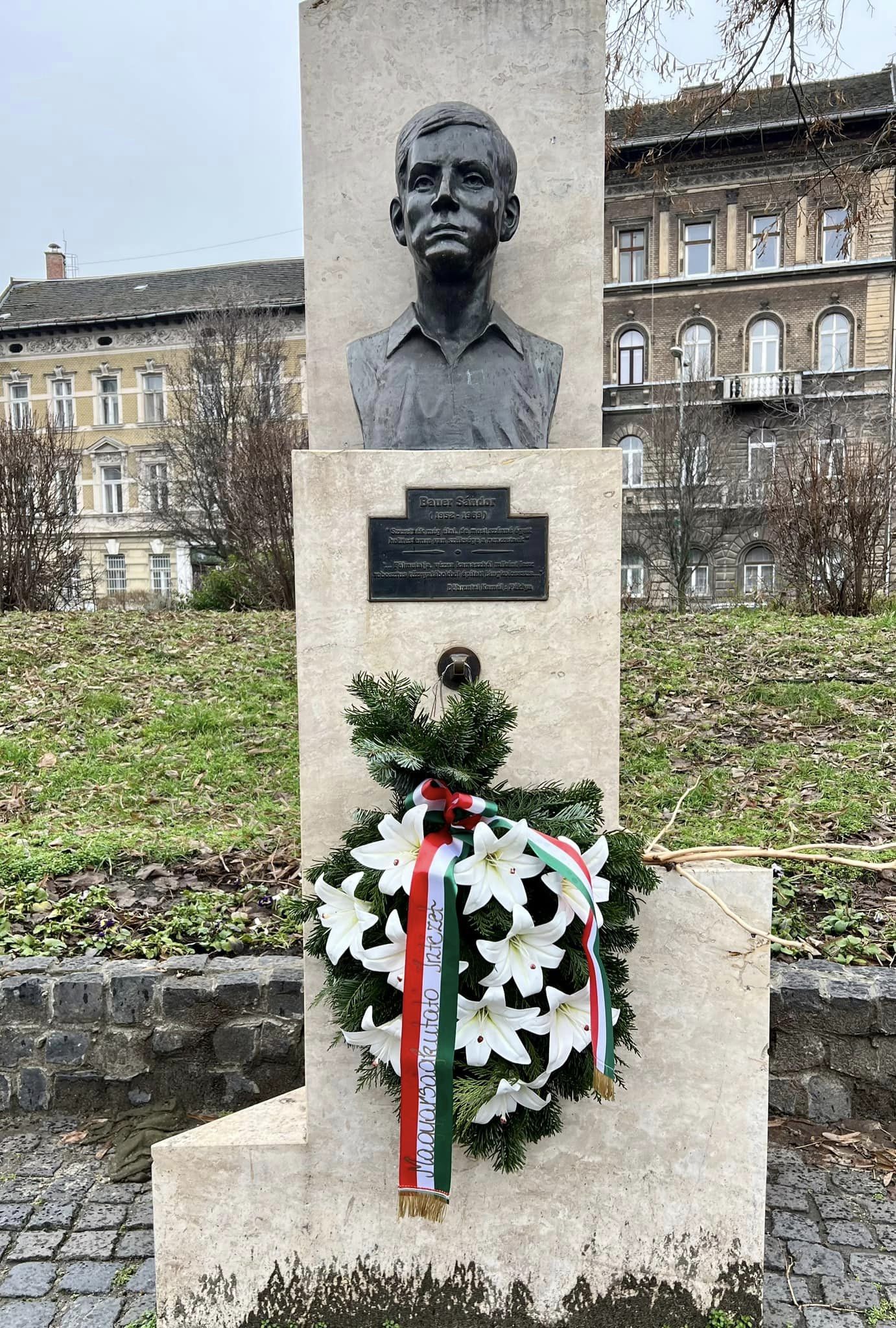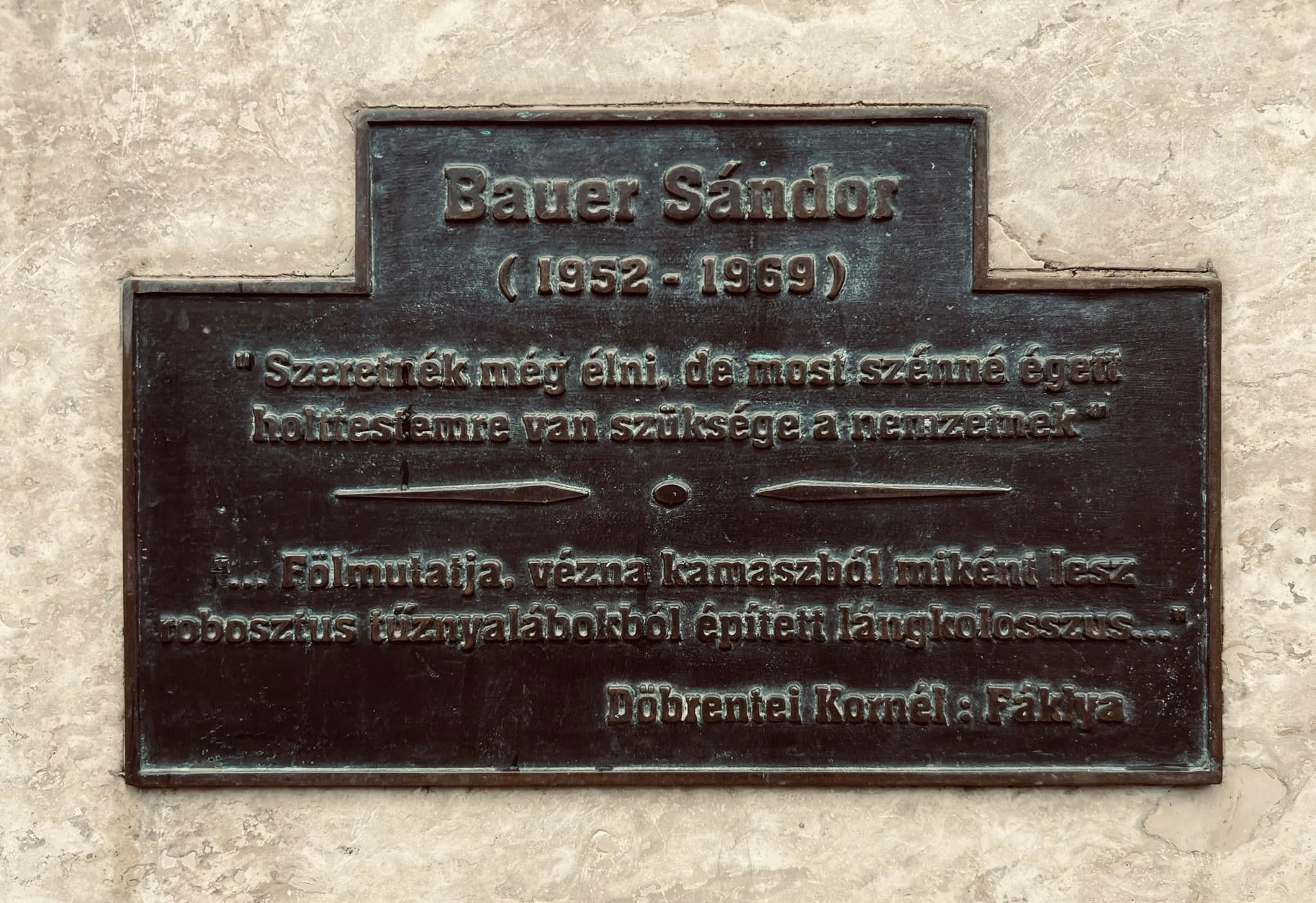Sándor Bauer sacrificed his life for Hungarian freedom - Gábor Horváth-Lugossy, Director General of the Institute of Hungarian Research, places a wreath of respect on the anniversary of the martyrdom of Sándor Bauer
On 20 January 1969, Sándor Bauer, aged only 17, set himself on fire in the Museum Garden in protest against communist tyranny and Soviet occupation. Since his childhood, his thoughts and character had been shaped by the trauma of the bloody suppression of the 1956 revolution, and he decided to fight against tyranny. Following the example set by Jan Palach, a student from Prague a few days earlier, he chose the symbolic site of the National Museum to pour petrol on his clothes and act as a living torch to protest against communist oppression.


The Kádár regime feared that the martyrdom of the freedom hero could reignite the flame of the revolution and that the funeral ceremony would turn into an anti-establishment mass demonstration, so the service was only allowed to take place in a small family circle under the supervision of state security. Sándor Bauer's deed could not receive much publicity, as his sacrifice was dangerous for the regime, and the political police of the Kádár regime even brought proceedings against those who commemorated him on 15 March. His example was followed - a year after his martyrdom - by Márton Moyses from Sepsiszentgyörgy (Sfântu Gheorghe, RO).


Sándor Bauer set an example for our nation as a living torch, the self-sacrificing patriotism and memory of the last young freedom fighter will be cherished.